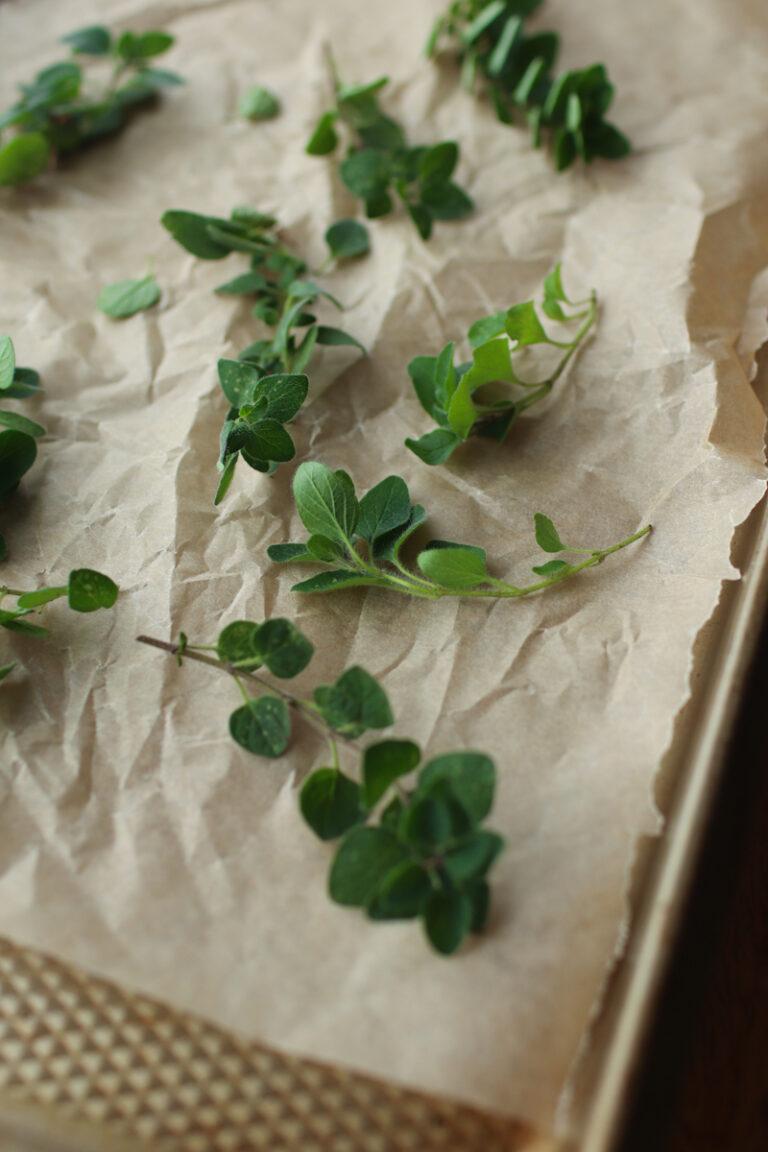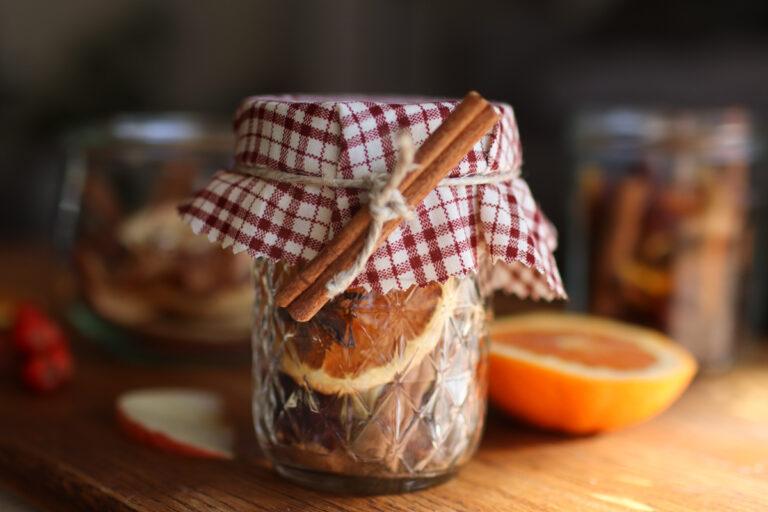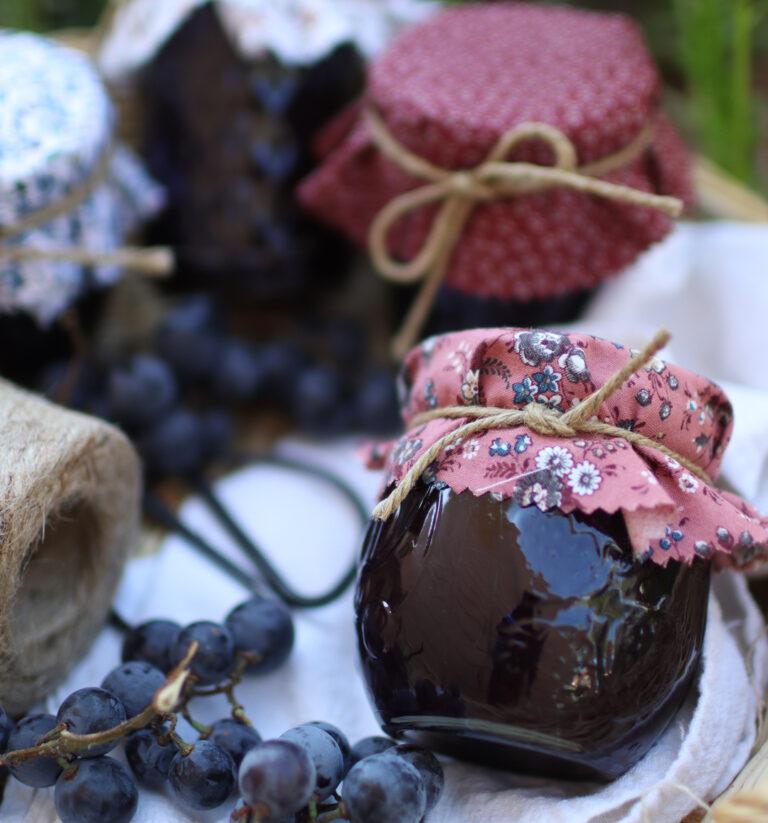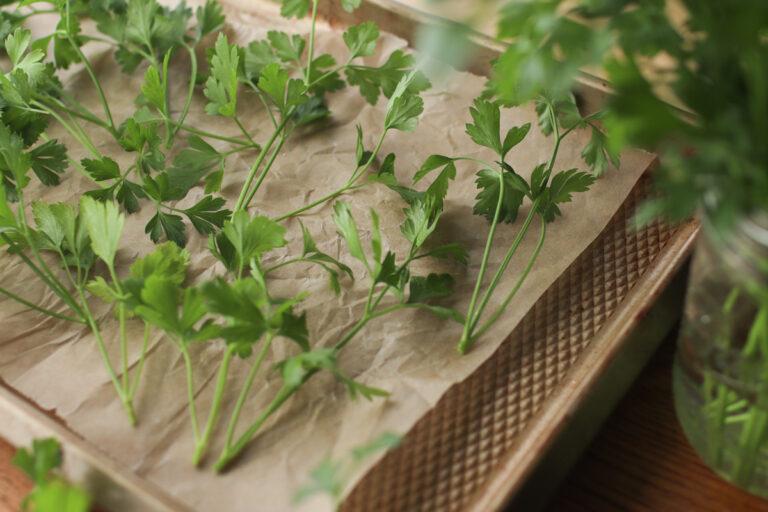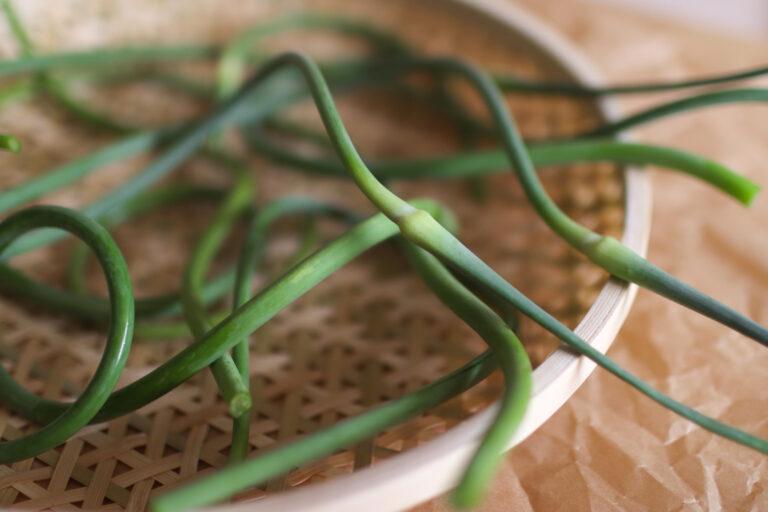How to Dry Bay Leaves: 3 Easy Methods for Drying
Drying bay leaves is a great way to preserve them for future use and it is surprisingly easy. Try one of these three simple methods and have a pantry stocked with homegrown herbs this winter!
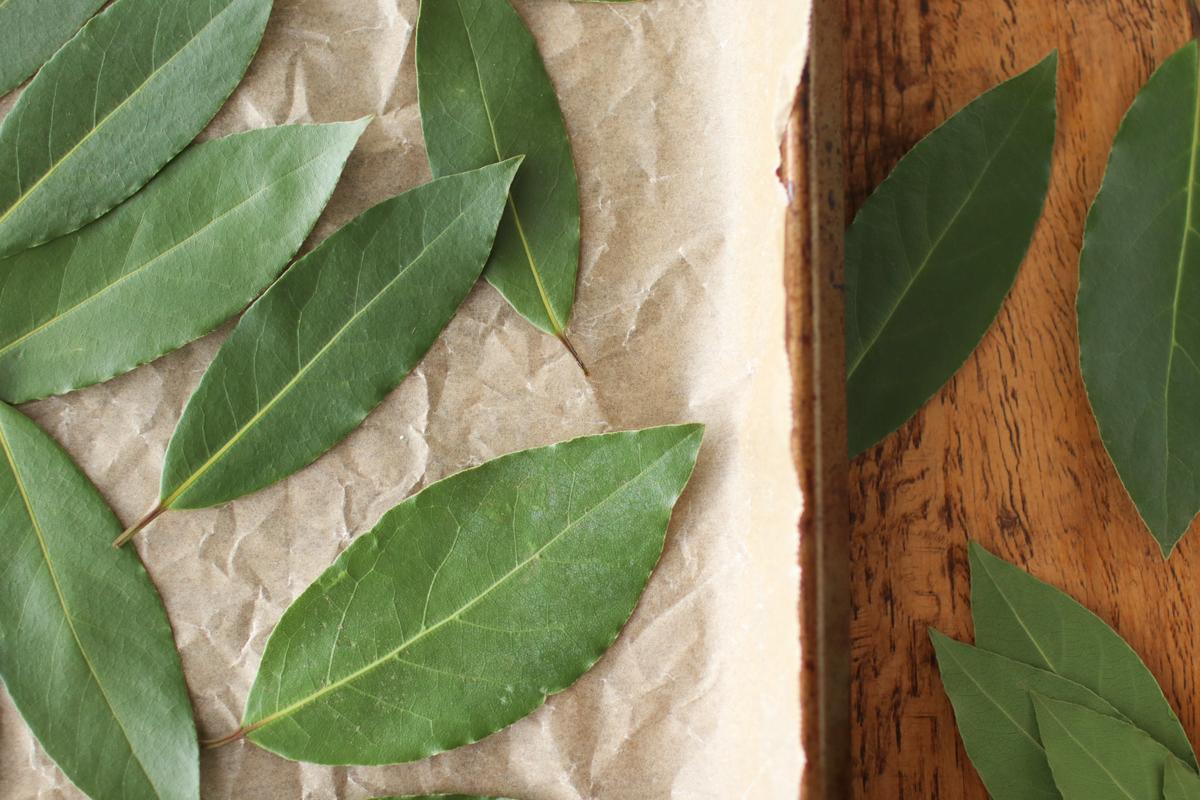
Drying Bay Leaves to Preserve Them
If you are lucky enough to have your own bay laurel plant, drying the leaves is a great way to have homegrown bay leaves to share and cook with.
The drying process for this herb is very simple because they are low-moisture leaves. There are a few different methods you can use, each with pros and cons. Below you can find step-by-step instructions for the three best methods:
What You Need to Know
Bay leaves are a Mediterranean herb that grows on the evergreen bay laurel shrub. The flavorful leaves are used in a variety of dishes and are simmered in the food to infuse it with their flavor, then removed before serving the dish.
Bay laurel trees grow in warm climates, typically in growing zones 8-10, and because they are an evergreen shrub, they can be harvested from year-round. That said, bay leaves are their best during the hot summer months.
There are many reasons to harvest bay leaves and preserve them through drying. One can preserve them at their peak for maximum flavor, save leaves from another person’s tree, or dry homegrown bay leaves for a thoughtful gift.
Whatever your reason for preserving fresh bay leaves, it is surprisingly easy and fast.

Harvest and Prepare the Bay Leaves
Before you dry bay leaves, you need to harvest and prepare them. For best results, harvest your bay leaves in the morning after the dew has dried during late summer.
Bay leaves can be harvested at any time, but they are their most flavorful during the warmer months.
Avoid harvesting leaves off of new plants as they need to get their roots established. A few years after planting, there will be plenty of leaves suitable for culinary use.
Once your leaves are harvested, give them a quick rinse under cold water and dry them with a clean towel. Cut the excess stems off the leaves before you begin the drying process.
This post contains affiliate links. If you make a purchase through the links, I will earn a small commission at no cost to you. As an Amazon Associate, I earn from qualifying purchases. Read my full disclosure here.
How to Air Dry Bay Leaves
Air drying bay leaves is the easiest method, but it does take the longest. It is the best way in my opinion because it takes almost no effort or special equipment. It does, however, require counter space.
Once the leaves are washed and prepped, lay them out in a single layer. You can dry the bay leaves on a baking sheet or cooling rack lined with a paper towel. This will allow air to flow around the bay leaf. Place them in a dry place out of direct sunlight.
Alternatively, you can tie your bay leaves into bundles and hang them to dry. Hang them away from the wall so they get proper airflow and choose a dry room out of direct sunlight. While this method takes a bit more time to set up, it is an effective way to air-dry the leaves and conserve your counter space.
The drying time will depend on the level of humidity and the temperature where you live, so check them every week or so. You’ll know the leaves are done drying when they are brittle and break when bent.
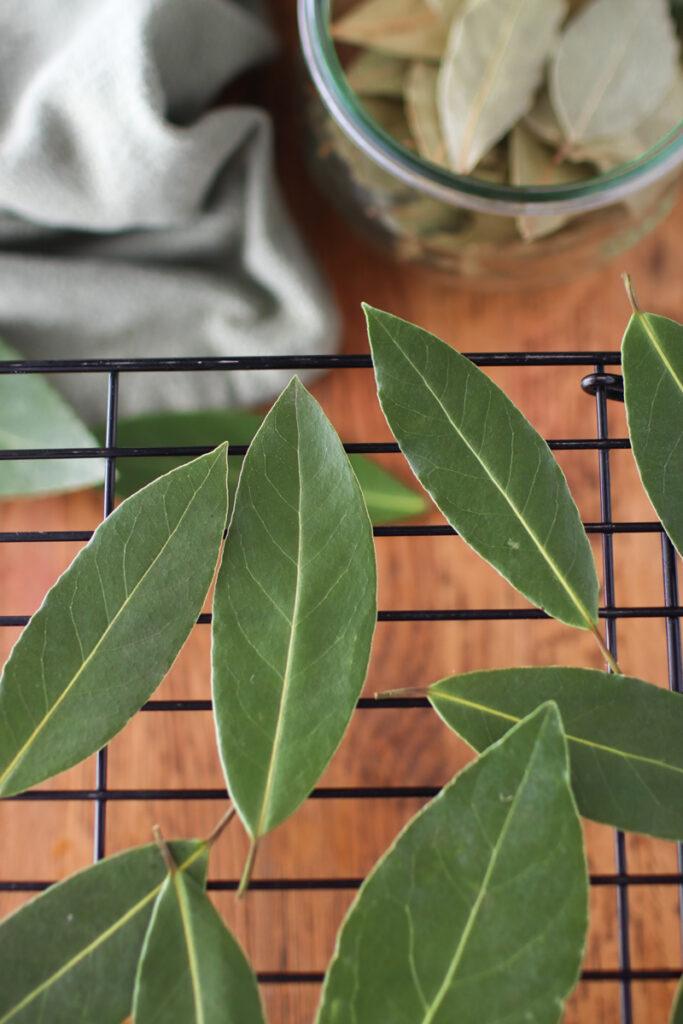
How to Dry Bay Leaves in the Oven
Drying bay leaves in the oven is quick and doesn’t require any special equipment. It does heat up the house, however, so this is not always an ideal method in the heat of the summer.
To oven-dry bay leaves, lay them out in a single layer on a large baking sheet. For best results, place a drying rack onto a baking sheet and set the leaves on the rack to increase airflow.
Preheat the oven to its lowest setting, usually between 150° and 200°F. Prop the door open with a wooden spoon while you dry the leaves to let out excess moisture.
Bake the leaves in the oven for around 30 minutes, then begin checking frequently. Remove the leaves from the oven when they are dry, brittle, and easily broken. Be careful to not overbake the leaves and turn them brown.
Allow the bay leaves to cool completely before storing them for later use.
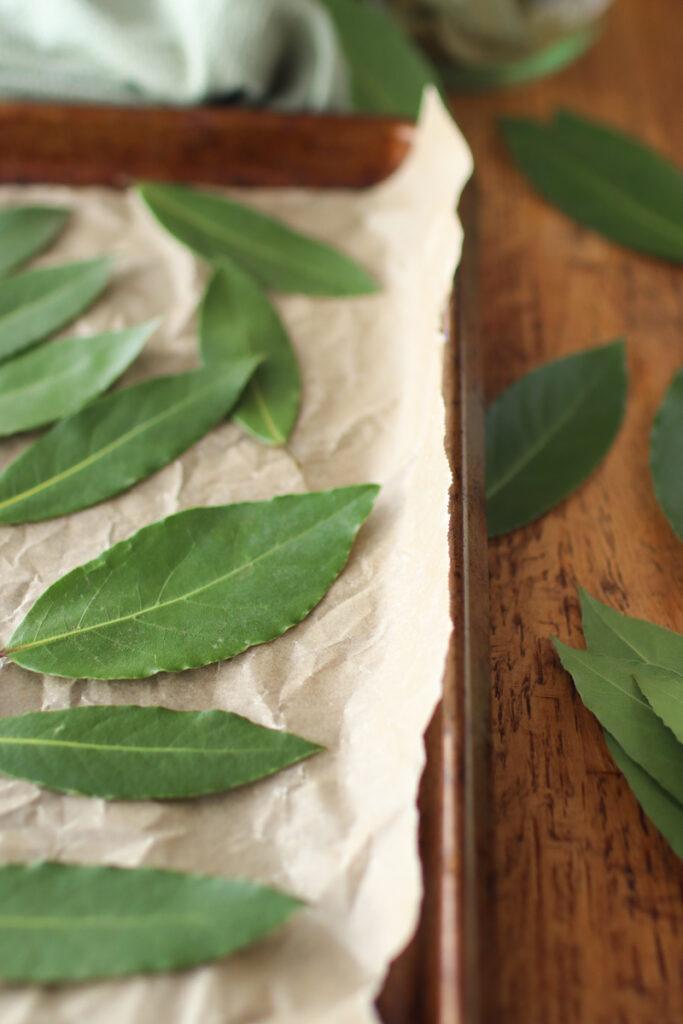
How to Dry Bay Leaves in a Food Dehydrator
Food dehydrators are a great way to dry herbs and other food. They dry food in a similar fashion to an oven but with better airflow and at a lower temperature. This takes longer but the risk of burning the food is much lower.
Dehydrators are ideal for preserving if you dry a lot of food, but they do take up space and require a financial investment. If you are purchasing a dehydrator, there are affordable options and more heavy-duty models for larger quantities.
After washing and patting dry the bay leaves, lay them onto mesh-lined dehydrator trays in a single layer. Place the trays into the dehydrator at 110°F. Start checking the leaves after four hours to see if they are dry. The bay leaves will take around 4-8 hours in the dehydrator to be fully dry.
How to Store Bay Leaves
Once you are certain your bay leaves have no moisture left in them, transfer them carefully into an airtight container. I recommend a plastic bag or a glass jar.
Try to avoid breaking your bay leaves because smaller pieces are more challenging to remove from a dish when cooking.
As long as the bay leaves are completely dry and in an airtight container, they will last a long time. I try to use my herbs within a year or two of drying them, but they will last even longer, just with a diminished flavor. You will notice that the leaves start out a vibrant green and slowly fade to a pale grey-green over time.
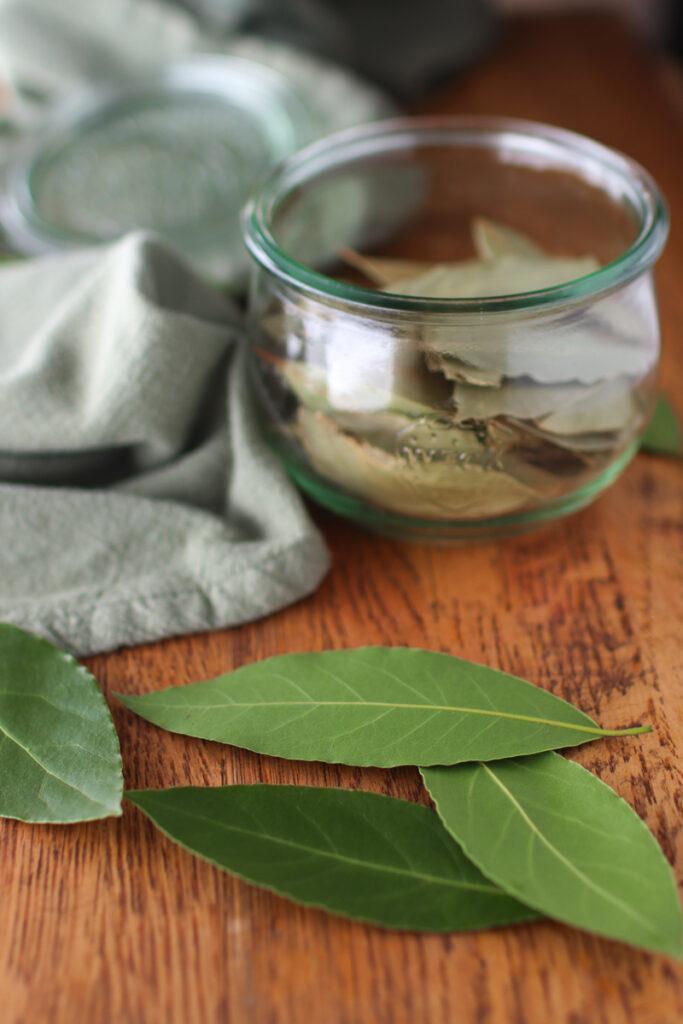
How to Freeze Bay Leaves
Freezing bay leaves is a super easy way to preserve their freshness and flavor. Frozen bay leaves will have a stronger flavor that is more similar to fresh leaves than to dried leaves.
To freeze bay leaves, wash and destem them as you would before drying. Make sure the bay leaves are dried of any excess water drops, then transfer them to a freezer bag or plastic container. Label the container with the contents and the date and place it in the freezer.
To use a frozen bay leaf, simply remove it from the freezer and toss it in the dish you are cooking. It doesn’t need any sort of thawing. Frozen bay leaves will stay fresh for well over a year if stored properly.
Uses for Dried Bay Leaves
Bay leaves are a unique herb because you do not actually consume the leaf. Bay leaves are added to dishes while they are cooking on the stove and then removed before serving. There is a wide range of dishes that call for bay leaves, including pasta sauce, soups, and stew. Any recipe that calls for this herb will taste even better with home-dried bay leaves.
More Useful Preservation Articles
If your harvest season is in full swing and you’re ready to preserve bits of your garden, check out these other helpful articles:

How to Dry Bay Leaves
Drying bay leaves is a great way to preserve them for future use and it is surprisingly easy. Try one of these three simple methods and have a pantry stocked with homegrown herbs this winter!
Ingredients
- Fresh bay leaves
Instructions
Air Drying
- Lay bay leaves out on a cooling rack or towel-lined baking tray in a single layer. Alternatively, tie them in a small bundle and hang them to dry.
- Place the bay leaves in a dry place out of direct sunlight.
- Check the leaves after a week. When completely dry, they will be brittle and break when bent.
Oven
- Preheat the oven to the lowest setting possible, usually between 150° and 200°F.
- Lay the bay leaves out on a baking tray or cooling rack and set them in the oven. Prop the door open with a wooden spoon to let out excess humidity.
- Dry the bay leaves in the oven for around 30 minutes, then check them frequently. Avoid browning the leaves by keeping them in the oven too long.
Dehydrator
- Place the bay leaves on mesh-lined trays in a single layer.
- Set the dehydrator to 110°F to dry the bay leaves.
- Start checking the leaves after 4 hours and remove them when they are completely dry. Drying in the dehydrator should take 4-8 hours.
Notes
- Before drying, give the leaves a rinse in cool water and pat dry with a clean towel.
- After drying, store the dried bay leaves in a jar or airtight bag.


